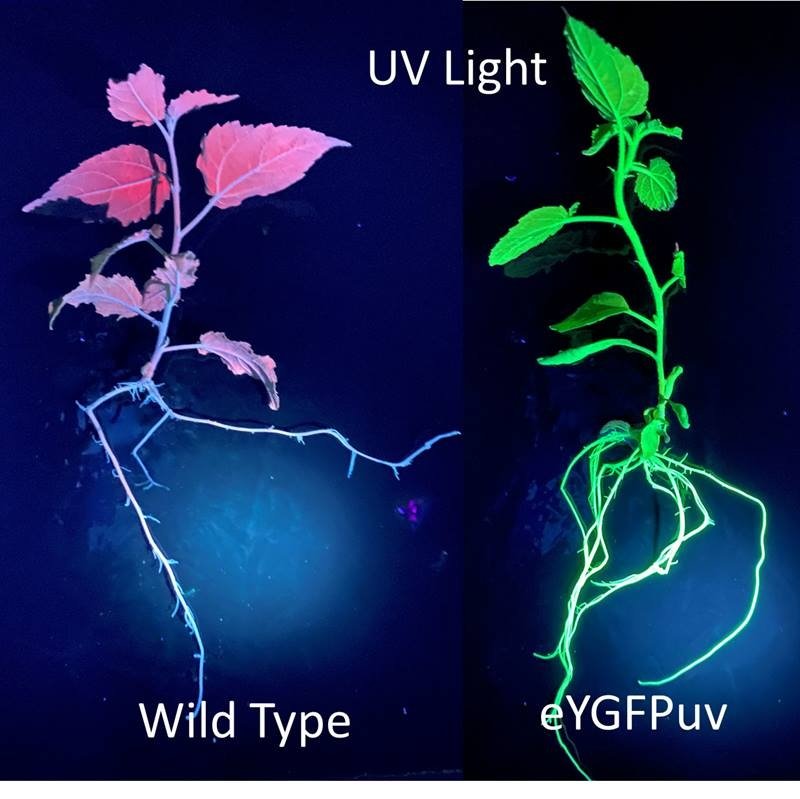Biologists often use green fluorescent protein (GFP) to see what happens inside cells. GFP, which scientists first isolated in jellyfish, is a protein that changes light from one color into another. Attaching it to other proteins allows researchers to find out if cells produce those proteins and where within cells to find them. This in turn shows how cells deliver and use genes. The problem is that this usually requires expensive equipment, such as fluorescence microscopes, and it can be time consuming. In this study, researchers describe how a special type of GFP can be used to ‘see’ protein production with the unaided eye. Modifying the genes of plants allowed the team to see GFP production using a simple black light to provide long-wave ultraviolet (UV) light.
The Impact
The research demonstrates real-time imaging of cellular and molecular events in a wide range of plants with the unaided eye and a black-light flashlight. This will enable quick and affordable screening for research and development or for real time monitoring of molecular events in mature plants.
Summary
Reporter genes are attached to other genes of interest to provide an inexpensive, rapid, and sensitive assay for studying gene delivery and gene expression. These reporters have long been an essential tool for live-cell imaging. Today, imaging and analysis are becoming more accessible through the development of UV-visible fluorescent reporters. This research from scientists at Oak Ridge National Laboratory aimed to advance the use and efficiency of these reporters in two herbaceous plant species (Arabidopsis and tobacco) and two woody plant species (poplar and citrus).
After designing and building a GFP UV reporter protein (eYGFPuv) that provides enhanced signals for all tested plant species, the researchers demonstrated that strong fluorescence could be captured using either a fluorescence microscope or UV light. Moreover, this UV‐excitable reporter can be observed across a wide range of scales from sub‐meter level seedlings to whole plants without need for special emission filters. For instance, by using a simple UV flashlight, the scientists demonstrated how this new reporter can facilitate rapid quantification of transformation efficiency in plant systems. These improved features will make this newly developed GFP-UV reporter a valuable tool for a wide range of applications in plant science research.
Read the paper: Horticulture Research
Article source: US Department of Energy
Image: The image shows the UV illuminated poplar plants. The ‘wild type’ on the left is the naturally occurring variant. The plant on the right contains the eYGFPuv reporter and glows green under UV illumination. Credit: Xiaohan Yang, Oak Ridge National Laboratory






